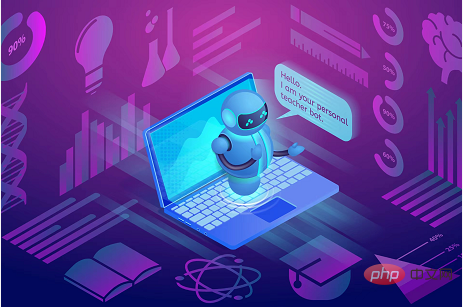Home >Technology peripherals >AI >Digital twins could be the key to automation success
Digital twins could be the key to automation success
- 王林forward
- 2023-04-12 08:31:211184browse

Automation brings huge benefits to businesses that take the necessary steps to adopt this technology, but people need to face the fact: the road to successful automation is not easy . Despite the best plans of some businesses, roadblocks and pain points still plague automation programs, creating bottlenecks, inhibiting growth, and limiting better returns.
Consider the challenges of automation—for example, heavy maintenance burdens can reduce ROI, and a lack of visibility into automation assets can lead to redundancy and exorbitant costs. So adopting digital twins and leveraging their inherent ability to successfully solve problems is starting to resonate with businesses.
Digital twins in automation date back to NASA’s space program in the 1960s and are best defined as a digital copy of an automated process that resides in separate storage on a robotic process automation (RPA) platform library, where actual automation is developed, deployed, and coordinated within the platform.
Advantages of Digital Twins
The main advantage of digital twins is that they evolve as automation evolves, so if any changes are applied to the automation in the RPA platform, these same changes will be reflected In a digital twin, it is ideally real-time or at least close to real-time.
Operational metrics (including runs, last run, number of issues, utilization and success rates) are also accessible and displayed where the twin node is located, allowing them to be monitored and continuously improved.
In addition to change and operational metrics, digital twins in automation enable enterprises to compile accurate documentation and detailed audit trails for the automation industry and maintain them in a single centralized repository. Doing so not only solves the problem of misplaced or missing process design documents, but also solves a major pain point of automation: the inability to visualize and understand how automation changes over time.
Regardless of the RPA platform that designs, deploys, and orchestrates all automation, maintaining a digital twin of all automation in a central location can significantly improve automation, standardization, governance, and visibility. Especially for enterprises with a multi-platform automation strategy, a single repository can provide deeper insight into the complexity of all processes, as well as the systems and applications that interact with them.
This not only greatly improves corporate oversight of the automation industry, but also allows for faster identification of potential issues and redundancies, as well as identification of automation that can be retired to reduce costs and increase returns.
REDUCED MAINTENANCE NEEDS
Digital twins also reduce the need for maintenance. By acting as a canvas for automation, digital twins can be quickly inspected to determine where errors occurred and how to correct them, saving time and money.
It also transforms the change management process. Rather than waiting for automation to fail before taking corrective action, digital twins are able to take proactive action immediately before potential failures are detected or ahead of regulatory changes or application updates.
Finally, digital twins can speed up and simplify RPA platform migration because a feasibility assessment can be more easily conducted to evaluate the effort required to switch to the target platform. Since digital versions of the latest automations exist, using the mapping engine to export automations with only minor modifications significantly reduces the effort required and eliminates manual recoding.
Building New Partnerships
In the coming year, this will change as more enterprises look to migrate from traditional RPA platforms to next-generation intelligent automation solutions. is particularly important.
Migration will become more complex as new partnerships are formed between established solution providers leveraging IoT information. There are now at least three digital twin-focused industry standards groups in place to help guide the development of the technology.
There is no doubt that digital twins in automation provide an obvious source of understanding what is delivering value, but implementing digital twins can become more complex as parameters, design principles, and even underlying assumptions change. .
Some digital twins still rely on legacy simulation and monitoring methods, while others have built-in artificial intelligence solutions that rely on changing data to keep parameters updated.
All of this suggests that while the benefits of digital twins may vary from enterprise to enterprise, digital twins will be more widely used in the future. With the compound annual growth rate expected to be close to 40%, some analysts are already predicting 2023 to be an important year for digital twin development milestones.
The global digital twin market is expected to grow from $6.9 billion today to more than $73.5 billion by 2027, driven by new developments including the ability to proactively search and acquire data. More and more businesses will recognize the enduring problems digital twins can solve and the benefits they bring, from increased efficiency to improved ROI.
The above is the detailed content of Digital twins could be the key to automation success. For more information, please follow other related articles on the PHP Chinese website!
Related articles
See more- Technology trends to watch in 2023
- How Artificial Intelligence is Bringing New Everyday Work to Data Center Teams
- Can artificial intelligence or automation solve the problem of low energy efficiency in buildings?
- OpenAI co-founder interviewed by Huang Renxun: GPT-4's reasoning capabilities have not yet reached expectations
- Microsoft's Bing surpasses Google in search traffic thanks to OpenAI technology

